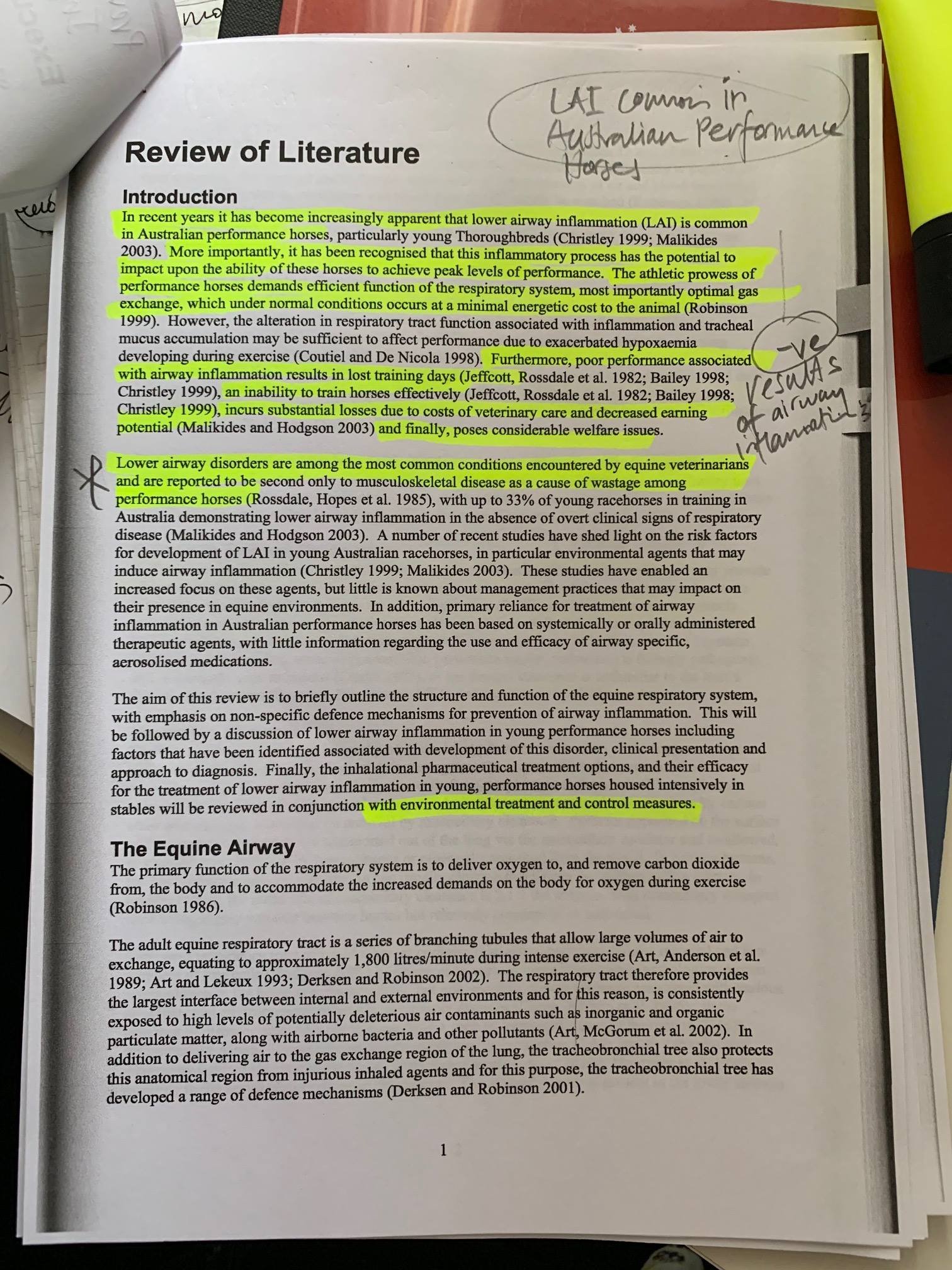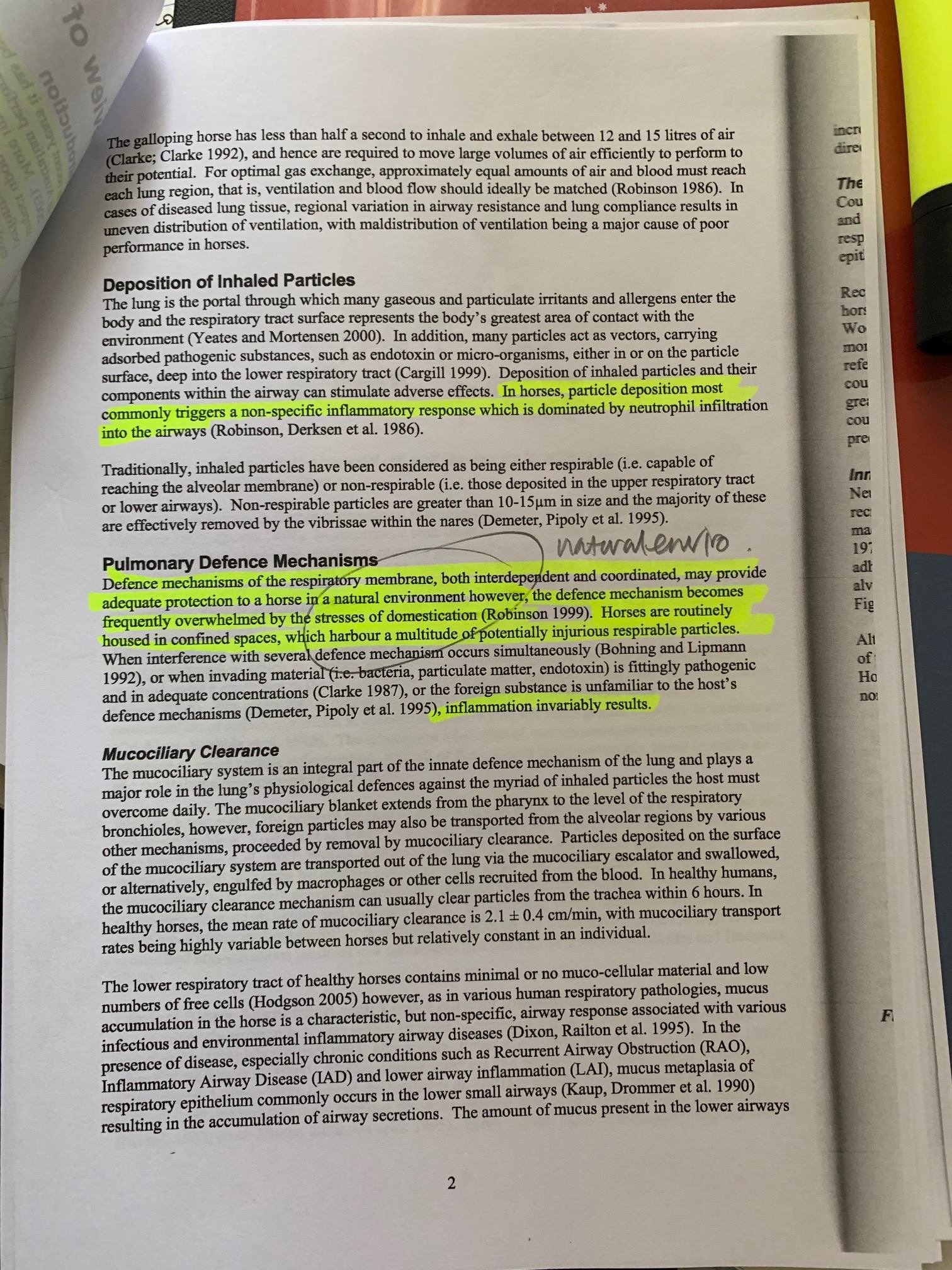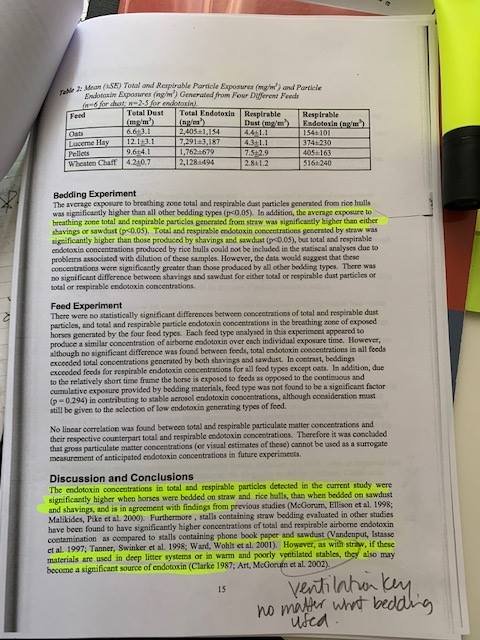Equine science article highlight: ‘Prevention and Control of Lower Airway Inflammation in Horses’
By Priscilla Spendlove, Jennifer Hodgson and David Hodgson,
RIRDC, 2008
This week’s highlight article looks at the potential causes and prevention strategies relating to Lower Airway Inflammation (LAI) in horses.
The importance of sharing this research is due to LAI’s prevalence in the horse community, reportedly “second only to musculoskeletal disease as a cause of wastage amongst performance horses.” Apart from poor equine performance, LAI can result in the “inability to train horses effectively and substantial losses due to costs of veterinary care and decreased earning potential.”
What is the relationship between LAI and the buildings that the horses are kept in? ‘The article’ suggests that stabling was one of the contributing factors.
Basically, the horse’s respiratory system has evolved to cope with the ‘natural’ outdoor air concentration of dust and other airborne particles, and when we confine our horses to buildings without the adequate ventilation, their systems can be severely compromised.
We would not knowingly want to compromise our horses’ welfare. Therefore it is important to help limit our horse’s exposure to environmental conditions that may generate airway irritation.
How can airway disease be mitigated with thoughtful facility design and management?
Firstly, the article states that the choice of bedding and feed (and management of these) are important in reducing horse’s exposure to irritant in the stables, with straw being a major source of inhaled toxins. Equitecture would extend this focus on contaminate sources to any indoor training surfaces as well. The article also refers to the thoughtful storage of bedding and feed so there is minimal contamination of the air quality of any adjacent horse buildings. Again, Equitecture would consider the proximity of any airborne particle contamination source to the stables i.e. dust from the exercise surfaces.
A common problem is the priority of human convenience: for example, the tendency to incorporate stables under the same roof space as an arena, and often in a four-sided enclosure. Simply providing opening for ventilation does not solve the issue of removing dust – in fact an arena oriented to the prevailing winds could actually compound he problem, blowing the dust from the arena into the stables. Only through responsive design can we limit the source of air contamination and still provide functionality and weather protection.
Deep bedding is one of the most common sources of air contaminants and bacteria in stables. However, no matter what the flooring/bedding system is, poorly ventilated stables remain unacceptable. Adequate ventilation does not mean small vents in the stable barn’s roof or only fresh air only during the day time. It is about appropriate air changes per hour and Equitecture would recommend adequate ventilation of horse facilities 24/7, regardless of season, regardless of the motives for the horse’s confinement or exercise. The article suggests, at a minimum, a “box with the upper door open...[would] meet the needs of a horse…even in still air conditions.”
As for dust creation/management, cleaning stables while horses are in them is not recommended as the “concentration of airborne particles will be highest while bedding is being changed/removed” This possibly applies to all sweeping of breezeways, etc. Facilities need to provide adequate exhausts for the dust so that that it simply doesn't re-settle in the same space. To optimise the positive experience of the horses, offering the freedom to choose their exposure to prevailing winds and be protected from cold draughts also needs consideration in the stable design.
It is crucial that we cater for the needs of our horse’s lower airway systems in the entire built environment that our horses are exposed to as a small part in the bigger picture of optimising a horse’s welfare.





